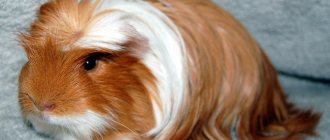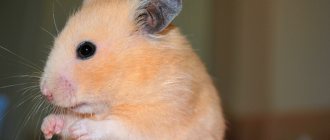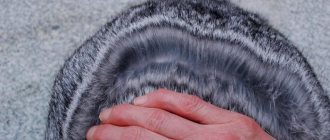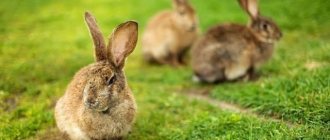How long guinea pigs live at home is of interest to every owner of a small pet. When you find a sweet and loyal furry companion, you really want him to be around for the rest of your life. Unfortunately, the lifespan of most pets is much shorter than that of humans. Guinea pigs are no exception to this. But still, compared to other domesticated rodents, the life of these animals is not so short. In addition, if you provide your pet with proper living conditions, you can almost double your pet’s lifespan.
Differences in the lifespan of pets in nature and at home
Pigs are considered the longest-livers among rodents, their average lifespan is 5-8 years. In nature, under ideal conditions, wild animals can live about 10 years, but their lifespan is negatively affected by diseases, attacks by predators, insufficient or improper nutrition, and adverse weather conditions.
Guinea pigs live longer than any other rodent
The life expectancy of pigs in captivity is shorter due to the selection work carried out on the species: breeders, trying to produce the most beautiful animals possible, did not pay attention to their health. However, the care of the owners, good care, comfortable living conditions, good nutrition and timely medical care help to significantly prolong the life of their beloved pet.
It’s always more comfortable in the company of others like you
Important! Keeping a pig alone reduces life expectancy: without communication and games with relatives, the rodent begins to eat more, move less and may even develop a nervous disorder.
The ideal option is a same-sex couple or a larger number of animals of the same sex. Under no circumstances should you have different-sex animals, because this can lead to disastrous consequences for the health and psyche of both animals.
This is interesting: What is the smallest bird on Earth?
average life expectancy
Unlike other rodents that live 2-3 years, guinea pigs are considered long-lived, which is what captivates future owners.
The small animals, which originated in South America, gained popularity around the world after the visit of Europeans, who transported them to other continents. Numerous breeding works, which made it possible to develop new species, shortened the natural life expectancy. A pig living in the wild can live up to 10 years. In this case, the duration depends entirely on external environmental conditions (climate, predators), so it can be 5 times lower.
At home, guinea pigs live from 5 to 7 years.
Lifespan depends on many factors, most of which are determined by proper care.
IMPORTANT! The age record was set by an English rodent, which was slightly short of the 15-year mark (it was 2 months short).
How many years do guinea pigs live?
Depending on living conditions, these South American furry animals can live up to 15 years. Moreover, such long-livers are found only among caring breeders who try to take maximum care of the rodent, but in the wild, when every day you need to survive and feed yourself, the lifespan is reduced to 5 years.
How long do guinea pigs live on average?
These animals are the most suitable pets, because under the right conditions of keeping and feeding, they can please their owners for up to 10 years, and sometimes longer.
IMPORTANT. Currently, guinea pigs are recommended as first pets for children aged 5-7 years in order to develop a sense of responsibility.
Longevity depending on breed
One of the main reasons for the longevity of these furry animals is genetic predisposition, i.e. breed.
There are up to 50 breeds of guinea pigs in the world, which differ in size, structure and coat color, so the lifespan of the pet and the breed are closely interrelated.
The lifespan of hairless guinea pigs (breeds - Skinny, Baldwin), kept in favorable conditions, averages 5-6 years. Such a short period of life is due to the absence of six and reduced immunity, as a result, they often get sick and die. Therefore, the main condition for keeping animals of these breeds is to constantly maintain the temperature regime (22-24 degrees) and the absence of the slightest drafts.
Amazing animals of the Abyssinian breed, if properly maintained (timely and adequate feeding, absence of stress and temperature changes), will delight their owner for up to 6 years. Such a short lifespan is due to the fact that these guinea pigs are quite sociable. Therefore, if you cannot devote a lot of time to your pet, then you should take care of purchasing several more individuals.
The average life expectancy of smooth-haired breeds (breeds - Texel, Sheltie, American) of these pets is about 8 years, since they are less whimsical and demanding.
Wire-haired Royal Rex pigs will also delight their owners for about 7 years..
Long-haired breeds of guinea pigs are considered long-lived - more than 7-8 years. This can be explained by providing more thorough care for such pets - frequent brushing, bathing, and providing the necessary vitamins and minerals.
Do you carefully monitor your rodent's diet?
Life expectancy is affected by nutrition and living conditions
How to extend the life of a guinea pig
In addition to the breed, the life expectancy of guinea pigs is also influenced by their housing conditions and nutrition, which largely depend on the person. Therefore, in order to prolong the life of the animal, you should pay attention to the following rules for keeping these animals.
- Care. The basic rules for keeping these domestic rodents are as follows:
- Pets need a spacious home (cage, container, aquarium). The bottom should be covered with either a special filler or sawdust. Since these animals are clean, they can be trained to use the toilet in a certain place and clean it daily rather than washing an entire cage. The house must have not only a feeder and a water bowl, but also entertainment items - various labyrinths and wheels. Also, periodically the pig should be allowed to run around the house;
- bathing should be carried out if necessary, and the water temperature should not be lower than 32 degrees, and after bathing, the pet is thoroughly dried or blow-dried and combed (long-haired animals are combed daily, wire-haired animals - 2-3 times a week, smooth-haired dogs - once a month);
ATTENTION. It is not recommended to bathe your pet if the apartment is cool, as it can catch a cold and die within 1-2 days from pneumonia.
- claws are also trimmed as needed - once a year is enough;
- Cleaning the house and washing toys, feeders and drinking bowls should be done daily, thereby preventing the proliferation of various bacteria, which are the causative agents of many diseases.
- Nutrition. The diet must contain all the necessary nutrients.
- The diet should mainly consist of grains, hay, greens and vegetables. At the same time, the introduction of new products should be gradual and in small portions so as not to harm digestion.
- Dairy and fermented milk products, sweets, as well as rotten vegetables and fruits are excluded.
- Clean water must be constantly present in the drinking bowl. Liquid vitamins can be mixed into it no more than 2-3 times.
- It is not recommended to overfeed the animal, as this leads to obesity and the development of heart disease. It is enough to train him to feed him at the same time (morning and evening), and also to remove uneaten food afterward.
- Disease prevention. A necessary condition for keeping these rodents is to visit a veterinarian once every six months and get all the necessary vaccinations. The doctor will give recommendations on nutrition, care, and also help identify diseases in the early stages, if any.
REFERENCE. The first signs of illness that require immediate attention to a veterinarian are unusual behavior (for example, aggression), disorientation, immobility, seizures, difficulty breathing, and others.
Different breeds have different life expectancies
Caring for babies without a nursing mother
If a guinea pig dies during childbirth or abandons her babies, it is very difficult for the babies to come out. The best option is to find them a wet nurse. If you have a pig that has recently given birth, you should try to introduce someone else's litter to it.
The female is more likely to accept cubs that are not her own if she smells a familiar odor coming from them. Therefore, each baby is rolled in stuffing from the foster mother’s cage. The female is placed in a carrier for an hour and a half. Strangers are placed in the nest with the native cubs. After this, the nurse is returned to the cage.
If a nurse cannot be found, the owner of the rodent family will have to care for the brood. The very first thing to do is to protect the little piglets from the cold. A heating pad placed directly in the cage will help with this.
For artificial feeding you will need an insulin syringe without a needle and cream with a fat content of 10%. In the first 3 days after birth, piglets are fed every 2 hours around the clock. On the 4th day, the break between meals is increased to 3 hours. The baby is picked up and held in a column.
Milk is introduced into the mouth very slowly so that the baby does not choke. The initial feeding dose is 0.5-0.7 ml. As the pigs get older, the serving size will increase.
From the 4th day, baby guinea pigs can try new foods:
- carrot;
- apple;
- zucchini;
- dairy-free baby cereals.
Lifespan of pigs depending on breed
Guinea pigs - care and maintenance at home
How many years pigs of different breeds live depends on their genetics, but this is not the main factor determining the life expectancy of the animal. The genetically determined program can be changed by the correct attitude towards the pet and good care for it.
Long-haired and rosette pigs
Such animals live 5-6 years. Long-haired pigs are susceptible to genetic diseases, so you should carefully monitor their health and constantly care for their coat. The Abyssinian (rosette) pig tolerates the lack of communication very hard, so if forced to be alone, the life expectancy of such an animal can be sharply reduced.
Smooth-haired
They can live for about 8 years without requiring particularly complex care. The high life expectancy of short-haired pigs is explained by the lack of genetic interference and genetic diseases characteristic of artificially bred animal breeds.
Skinny and Baldwin
Hairless pigs are hypoallergenic breeds. The difference between a Skinny and a Baldwin is that the former may have fur on the muzzle and tips of the paws, while the latter, starting from 2 months of age, have no hair at all.
With good care and care, skinnies can live a long time
Bald pets live from 5 to 8 years, provided that the temperature in the room where the animals are kept is maintained and their health and nutrition are taken care of.
Cakes
The life of cake guinea pigs (smooth-haired, with spots of black, white and red) can last up to 10 years. They grow up to 1.5 years of age, reaching a weight of more than 1.5 kg and a length of about 30-35 cm.
Important! The lifespan of long-haired rodents increases greatly with caring owners: their fur requires constant attention and care, the pig is pleased with it, she feels safe and comfortable and will live much longer.
General health
These animals have a fairly strong immune system; with proper maintenance and care, they can boast of good health. But despite this, rodents, just like others, are susceptible to diseases and it is necessary to monitor any changes in their behavior and appearance.
If you notice any changes, for example, your guinea pig has stopped being active, has lost its appetite, has a cough, it itches a lot, its fur has begun to fall out, and other symptoms, you should immediately go to the veterinarian.
Remember that the disease is easy to treat at an early stage. Advanced disease leads to various severe complications and even death.
Be sure to undergo regular checkups with a veterinarian and get vaccinated. There are diseases that do not show any symptoms in the early stages; examination by a doctor will allow them to be identified in time.
Longevity depending on breed
There are up to 50 breeds of pigs, which are distinguished by the size, color and structure of their coat (there are already pigs that are completely devoid of hair). Sometimes breed affects an animal's lifespan.
Hairless Skinny and Baldwin live from 5 to 8 years, the period that is considered normal for other pigs is limited for them. At first they lived much less. Completely devoid of hair, the pigs had weak immunity, easily caught colds and died.
Careful care is required for a pig of any breed so that it remains cheerful and active.
But the work of breeders was not in vain; today, hairless representatives of pigs live quite a long time if the conditions are met. The main condition is a constant air temperature without drafts and changes from 22 to 24 degrees.
Very peculiar Abyssinian guinea pigs, which are called rosette pigs because of their peculiar hair growth, live up to 6 years . In some areas, the fur grows in rosettes; the more of them, the higher the value of the pig. They are very difficult to breed; requirements are imposed even on the number of areas with “sockets”.
These animals are very human-oriented. If you can’t spend a lot of time with them, you should definitely keep at least a couple of pigs so that they don’t get bored. Stress, long periods of feeding, and temperature changes can accelerate the death of a pet.
Smooth-haired guinea pigs live on average up to 8 years. They can be very large, with colors ranging from a mixture of dark and milky white, typical of Siamese cats, brindle, spotted (Dalmatians) to plain cream, brown, black and white.
Royal Rex guinea pigs live on average 7 years. They are probably the most unusual of rodents: wire-haired, with curls, hair length up to 2 cm. The hair does not fit tightly to the body, it seems that Reksiks are dressed in astrakhan fur coats.
Long-haired breeds live up to 7-8 years, sometimes longer than others. This is probably due to more careful care. The coat, which goes down like a mantle to the surface, is shiny, slightly wavy, makes the pig look like a Pekingese, they are often given haircuts and hairstyles, tied with bows, decorated with hairpins with rhinestones, combing and bathing almost every day, carefully rubbing in vitamin ointments to preserve the beauty of the hair cover, calculating the diet so that unusual animals have enough vitamins and minerals.
A good appetite, examinations by veterinarians, constant communication with the owners and walks around the apartment, running through a maze or on a wheel, swings - all this will help the pig keep fit and stay in good shape for many years.
How to determine age
Experienced owners know that it is better to purchase individuals under 2 years old. Young people get used to new living conditions more easily, and they have much fewer health problems. You can find out the age of a guinea pig by visual inspection. This method will not give an exact date of birth, but it will help to distinguish a young individual from an old one.
- Dimensions. Month-old animals weigh only 500 g; adults reach a weight of 1–2 kg for males and 0.7–1 kg for females by the age of one and a half years.
- Coat. Young rodents boast silky and shiny fur. Over the years, places appear on the surface of the body where hair stops growing. The more bald spots a pet has, the older it is.
- Teeth. Young people easily chew solid food with even, snow-white teeth. With age, teeth become yellowish and wear down unevenly.
- The claws of young individuals are smooth and sharp. Over the years, the claws turn into keratinized plates that curl into spirals.
Important! You can determine the age of a pet by its behavior. Young rodents are characterized by stupid curiosity; they fuss and play noisily. Over the years, activity becomes less, because older animals prefer to lie down on soft bedding.
Nutrition
Let's talk about what guinea pigs eat, how long they live and what the normal weight of these animals is. After all, a proper diet is the key to the health of any animal. It is very important to follow the menu typical for pigs in nature. Proper nutrition is provided with the help of specialized feed, but feed alone is not enough. The pig needs fresh vegetables and fruits, hay, and twigs.
Feed and hay must be of high quality, without signs of rot, rot, excess dirt, mold, foreign odors, etc. Vegetables need to be washed and cut into pieces. There is no need to remove the skin. Poor nutrition can significantly shorten a pig's lifespan. Study the list of permitted and prohibited products.
This is interesting: Where do gray wolves live in the wild?
Peppermint treat
Ingredients:
- 1 medium overripe banana.
- 2 chicken eggs.
- 3 tbsp. spoons of honey.
- 3 tbsp. tablespoons of liquid coconut oil (can be replaced with sunflower oil in the same amount).
- 1/2 teaspoon mint flavoring.
- 1/2 teaspoon baking powder.
- A quarter cup of carob (roasted carob powder). A small amount of cocoa can be substituted, but this is not recommended for animals. Therefore, try to find an original product.
- Oat flour.
Cooking procedure.
1. Mash the banana in a bowl.
2. Beat eggs into the resulting mass, add honey, baking powder, cinnamon and coconut (sunflower) oil.
3. Add oatmeal to the mixture to form a firm but slightly moist dough.
4. Divide the resulting volume into 2 equal parts.
5. Pour 1/4 cup of carob powder into one half, and add the same amount of flour to the second half. A hard lump should form that does not stick to your hands.
6. Roll out 2 rectangles, 9-10 mm thick.
7. Place the layers of dough on top of each other and roll along the long side. Wrap the resulting sausage in plastic wrap and put it in the refrigerator overnight.
8. Preheat the oven to 180 degrees.
9. Cover a baking sheet with parchment paper.
10. Remove the film and cut into 3-3.5 cm rounds.
11. Place on a baking sheet. During cooking, portions of dough will not increase in volume, so you can place them close to each other.
12. Bake for 10-15 minutes.
If you want to please your pet with a crunchier treat, cut the rolls into thin slices (about 1 cm), and after cooking, additionally dry them in a warm oven or even in a non-stick frying pan.
The finished product is stored for a long time in a dry place. So, by baking peppermint rolls once, you can treat your four-legged pupil with them for a long time.
Bon appetit to your dog!
I like it I don't like it
The influence of interbreed differences
Factors that influence the lifespan of guinea pigs include breed (although of all the reasons it plays the least role).
Existing varieties can be divided into 3 large groups.
Longhair
Abyssinian guinea pig
Such pets require careful care of their fur and on average live about 5-6 years
. These include:
- Peruvian. It is distinguished by the maximum length of the hairs and the obligatory bangs covering the eyes.
- Rosette (Abyssinian). The bizarre growth of the coat is characterized by a multidirectional arrangement, forming curls with clear boundaries (“rosettes”). For animals performing at exhibitions, the number of these curls is important (the owner of the least number loses).
- Sheltie. It is similar to the Peruvian, but has a peculiar comb on the head (the fur is located in the opposite direction).
- Coronet. Long-haired result of crossing Sheltie and Crested, distinguished by a “crown” of wool.
Shorthair
American guinea pig
Owners of short hair have a wide range of colors, do not require complex care and can live up to 8 years
. These include:
- Crested. The woolly white “rosette” on the head takes the shape of a “crown”.
- American. One of the most popular types of animals with short hair. The classic version with a smooth, shiny coat that does not have “rosettes” or “crowns”.
- Texel. The hair has a curly structure and is prone to frequent tangling, so it requires more careful care than other representatives of this group.
- Himalayan. A rare breed with a unique Siamese cat color. Despite the lack of official recognition, the coloring gained popularity, which affected the final cost.
- Royal (“rex”) It has no guard hairs, but has dense and elastic fur.
- American Teddy. The thick coat has chocolate or light sand colors and consists of hard hairs.
Hairless
Skinny guinea pigs
Hypoallergenic breeds of hairless rodents, bred by the work of dermatologists, live for about 5 years (in rare cases, the mark reaches
. These include:
- Skinny. Wool is present only on the paws and face.
- Baldwin. They have elastic skin, devoid of hair follicles. A newborn animal is distinguished by the presence of a fur coat, which disappears within a couple of months after its birth.
Among the presented breeds of guinea pigs, short-haired ones live longer, which is explained by ease of care and the absence of specific gene diseases.
IMPORTANT! It is worth giving the position to the breeders. Thanks to painstaking work, they were able to increase the average life expectancy of hairless breeds. Initially, such pets were distinguished by weak immunity, reducing the maximum age to the level of other small rodents (hamsters, rats).
Factors influencing life expectancy
The lifespan of guinea pigs at home is influenced by a whole range of different factors. These include:
- breed of animal;
- content;
- care;
- heredity;
- nutrition;
- health status.
Each of these factors affects the lifespan of guinea pigs to varying degrees, but they should all be taken into account.
Breed influence
Breed affects the life expectancy of an animal less than other factors. This parameter rather allows the pet owner to determine the initially set deadline. Compared to other rodents, pigs live a long time. But representatives of some breeds, according to generalized data, live twice as long as others. Therefore, it is important to know which category your pet belongs to.
Varieties formed naturally (i.e., in natural conditions) are more durable than those bred artificially (by selection). This is due to the fact that natural selection operates in nature - the survival of the fittest.
There are fifty different breeds of guinea pigs in total. They differ in size, color options and other characteristics. They can be divided into three main groups:
- hairless;
- short-haired;
- long-haired.
Hairless or hairless guinea pigs have the shortest lifespan of all varieties. On average, they live 5 years, but with proper maintenance this period can be extended to 8 years (maximum). This category includes the Skinny breed, as well as the equally common Baldwin. These hypoallergenic varieties appeared through the efforts of breeders. They are completely devoid of fur, as a result of which they easily catch colds. Initially, they lived as long as hamsters, but breeders improved the bred variety, thanks to which hairless pigs got a longer life.
Short-haired breeds, on the contrary, have the longest lifespan. On average, these guinea pigs live to be 7–8 years old. These varieties include:
- American;
- American Teddy;
- Himalayan;
- royal, aka Rex;
- crested;
- texel.
Long-haired pigs live on average 6-7 years, but with proper care they can live longer. Breeds included in this category are:
- sheltie, also known as silkie or snare;
- rosette, also known as Abyssinian;
- Peruvian;
- Coronet
When approximately calculating the time allotted to a pet, you cannot focus only on its breed. There are other factors to consider as well.
Conditions of detention
Keeping an animal at home should not be a “prison” in a cage. In order for your pet to live a long life, you need to provide him with a comfortable existence and sufficient physical activity.
The pet's house should be spacious, the desired size is 40x30 cm per animal. The animal's housing needs to be kept clean - regularly cleaned, changed filler and bedding (they should be chosen of high quality).
In addition to the house, the pet should have an area for entertainment, equipped with tunnels and other toys that will allow the animal not to get bored and not become overgrown with excess fat from lack of exercise. From time to time it is worth letting your pet out for a walk and run around a large area - on the street or at least in the rooms of the house.
There should be no drafts in the room where the animal is kept. The air temperature around the pet should be +18–22 °C. Hairless (hairless) pigs need to be kept in an environment with a higher air temperature - the required value is +22–24 °C.
In order for the animal to be healthy and live as long as possible, you need to follow the rules of caring for it. It is necessary to monitor the length of teeth and claws. In order for your pet to grind them down as needed, you need to install a special mineral stone in the cage. Too long teeth will not allow the animal to eat, which will lead to exhaustion and then death. If the pet does not have time to grind down the excess length of the teeth on its own, it will be ground down by a veterinarian. Long claws can be trimmed at home using a nail clipper.
You should regularly check your pet's eyes and ears. If contamination is detected, they must be carefully cleaned. In addition, it is important to take care of your pet’s fur (especially long-haired ones), combing it regularly, preventing it from becoming matted.
You should not bathe the animal often - only when necessary. During and after washing, the animal should be protected from cool air and drafts. It is better to use hypoallergenic shampoo. Bathing water should be warm. After the water procedure, you need to dry your pet's fur with a hairdryer or towel. You cannot leave the fur coat wet - this will lead to hypothermia and the pig will get sick.
Received heredity
This factor cannot be changed; it can only be accepted. If a pet is diagnosed with a genetic disease, all that remains is to love the poor animal as it is. And try to make him happy, despite the illness.
It is believed that diseases transmitted at the genetic level are much less common in short-haired pigs than in hairless and long-haired pigs.
Nutrition composition
The life of an animal is connected with its nutrition. Your little pet should not go hungry. This is due not so much to a lack of nutrients, but to the lack of peristalsis in the pig. The peculiarity of the animal’s body is such that in order for the digested food to be released, the rodent must continue to eat, i.e., only new food can remove processed food from the intestines - each next eaten piece pushes the previous one through the gastrointestinal tract.
You can’t leave him without food, but you shouldn’t overfeed him either. Like all domesticated rodents, domestic guinea pigs are susceptible to obesity.
It is important to create a menu correctly so that your pet receives all the necessary elements in sufficient quantities. Daily nutrition should be shaped so that foods are distributed in the following proportions:
- 60% – high-quality special feed;
- 20% – vegetables and fruits;
- 20% – branches of fruit trees, hay, crackers.
In addition, special mineral and vitamin supplements are necessary for the health of the animal (this is especially true for preparations with vitamin C). We must not forget about drinking; your pet should always have free access to clean, fresh water.
General health
Pigs have strong immunity, but this does not mean that they do not get sick. It is important to monitor any changes in your pet’s behavior and appearance - all this signals a disease.
If any deviations from the pet’s usual condition are detected (for example, the animal itches, coughs, becomes lethargic, shreds fall out of its coat, etc.), you should immediately show the pet to a veterinarian. Diseases are well treated only in the early stages; advanced disease leads to the death of the animal.
It is also worth considering that not all diseases make themselves felt immediately. Therefore, to maintain health, it is better for the animal to be regularly examined by a veterinarian and receive the necessary vaccinations and vaccinations.
Diseases
Various diseases are a factor that can significantly reduce the life expectancy of any pig. Let's consider the signs by which you can determine the onset of the disease, which will allow you to consult a doctor in time:
- Changes in behavior - lethargy, desire to hide, poor appetite.
- The pig lies in the corner, closes its eyes.
- Heavy breathing, shortness of breath, wheezing, cough.
- The animal began to drink much more often.
- Diarrhea, fur matted on the belly.
- Hair loss.
- Discharge from the nose, eyes.
- Skin ulcers, bald spots.
- Chills, trembling.
- Dry stool, lack of stool.
- Cramps.
- The pig itches frequently.
What to look for when choosing an animal?
You should not buy an animal that is 2 years old or more.
It is better to purchase a rodent from a nursery, and you can be sure that the animal is purebred. It will be possible to find out the pedigree of the rodent, what hereditary diseases it has, how long its parents lived. The range of prices for gilts in a nursery can vary significantly. Here you can pick up specimens of both show class and pembroke.
You can purchase an animal from breeders. In this case, it is possible to assess the conditions in which the rodent was kept by looking at its mother.
You can also buy a pig at a pet store, but then you will not be able to find out its pedigree, how the animal was previously kept, and you will have to eyeball the condition of the animal at the time of purchase.
A healthy rodent is tidy and active. Of course, the animal can rest, but when it sits huddled in a corner all the time, then the pig may be stressed or not feeling well.
If you pick up a rodent, it should not struggle or squeak. His coat should be shiny, without areas of alopecia. It is important to pay attention to what it is like near the anus; if it is dirty and sticky, then this means the rodent has loose stools and is sick, so you should not buy it. The nose of a healthy animal is dry without any discharge, the eyes are shiny, there should be no tears or pus in them, the mouth is closed.
Care
Let's talk about what kind of care guinea pigs need. How long do these animals live in captivity and how difficult is it to care for them? Your guinea pig should be bathed periodically using dog shampoo. To maintain hygiene, you can use dry shampoo. In addition, your pig's nails need to be trimmed if necessary. Long-haired animals need brushing.
Longevity records
With proper and careful care, pigs can live up to ten years. The record holder in terms of longevity are individuals who have lived up to fifteen years. But in ordinary life it is better to forget about records and completely focus on the happiness and health of your animal, then a long life is guaranteed.
Breeds of domestic rodents
At home, guinea pigs are easy to care for. By nature, they are peaceful, calm animals that are easily adaptable and amenable to training. Rodents live in plywood houses, or a cage closed on 3 sides, as they are naturally quite shy. Every day you need to change the tray in the cage, fill the drinking bowl with clean water, add food. Sawdust is changed weekly, animals with long hair are combed with a fine comb.
Proper care, nutrition, lack of stress, and physical activity can extend the life of guinea pigs to 12-15 years. 15 years is the life record for a rodent, recorded in the Guinness Book of Records. Typically, pets live from 6 to 8 years.
There are about 50 breeds known in the world, different in length, structure, coat color, without hair at all (Skinny, Baldwin), in body weight of the animals and other characteristics.
International exhibitions and shows are regularly held with the participation of the best specimens of the oldest species: Abyssinian (rosette), English Self, Peruvian. Some pet breeds are obtained by crossing and remain unrecognized: Skinny, Baldwin, Somalia. The most popular for breeding at home are:
All breeds of pets can be divided into groups:
Rare ones include:
- Skinny;
- Baldwin;
- Ridgeback;
- Teddy is Swiss and longhaired.
average life expectancy
Guinea pigs are recognized as long-livers in the rodent world. This factor has significantly contributed to the spread of guinea pigs as pets. It’s unlikely that anyone wants to say goodbye to their pet forever, having barely had time to get to know it better. The advantage that guinea pigs received from nature and from breeders over other rodents has made them one of the most popular pets all over the world.
The average lifespan of a guinea pig is 5–8 years. For comparison, hamsters live only 3-4 years. The pig's age is still youth. An animal is considered to be in its prime before the age of 4; old age begins after 6 years.
Of course, guinea pigs live much longer at home than in the wild. This is due to the fact that in natural conditions the animals almost never live out their allotted time - they are destroyed by predatory enemies.
With perfect care and maintenance, your pet can celebrate its 10th anniversary. There are also long-livers who have crossed the 12-year mark, but it is a rare rodent that reaches this age. One of them even managed to get into the Guinness Book of Records. The champion pig from England did not live only 2 months before her 15th birthday. This record has not yet been broken.
Advantages and disadvantages
Photo from cdn.skim.gs
Every pet has its own strengths and weaknesses, so a potential owner should know all the characteristics before purchasing.
Advantages
These are very friendly and calm animals. They are not aggressive at all and are suitable for families with small children.
The charming appearance and cute face are loved by many owners of these pets. A variety of breeds, colors and sizes allow you to find “your” pig, which will delight you not only with its behavior, but also with its beautiful fur.
The ease of care and unpretentiousness of guinea pigs is definitely one of the main arguments in favor of caves. They are also extremely clean and wash themselves with their paws, like cats.
These pets can be taught a couple of funny tricks that will delight the owner and his family. In the main arsenal: stand on their hind legs to beg for food or spin around their axis. These fluffies generally get used to being handled very easily, respond to their name and recognize their owner.
In the wild, guinea pigs live in packs, so you can buy two or three at once so that your pets don't get bored while you're at work or school. Thus, the animals do not suffer from lack of attention and communication, and you can calmly go about your business.
Unlike hamsters and many other rodents, they are diurnal animals. They have the same daily routine as humans, but sleep for approximately 4–6 hours at night.
The answer to the question: “How many years do guinea pigs live at home?” will pleasantly surprise the owner. These smart and charming pets can delight you for 7-10 years. However, such indicators depend on housing conditions, nutrition and timely veterinary care.
Good news for allergy sufferers: Cavies are considered hypoallergenic.
These animals do not need intense physical activity or long walks. A special ball for running around the house and a few devices in the cage will be enough for them.
Photo from cdn.skim.gs
Difficulties
For a long and healthy life, furry cats need a balanced diet.
They are very timid and are afraid not only of sharp sounds and new people, but also of unfamiliar smells, which they sniff for a long time, trying to find the source and determine its danger. At the slightest perceived threat, the animal tries to hide, begins to clean its fur, lowers its ears and presses itself to the floor of the cage.
Like all pets, they require regular care, which includes not only cleaning the cage and replenishing the water bottle and food bowls, but also combing long-haired breeds, trimming nails, etc.
If not properly cared for, an unpleasant odor may appear. But this is more likely the inattention of the owner than a pig problem. After all, high-quality sawdust and their constant replacement will solve this problem once and for all.
These animals are sensitive to overheating and drafts. Therefore, you should not place them near a window that you often open or on the balcony.
These are quite “talkative” pets. Every day they make many sounds: grunting, squeaking, purring, whistling and squealing. At the same time, each sound has its own meaning and means a certain message, which reveal the features of what the guinea pig is doing now.
They are constantly marking their territory, so be prepared for this when you let your pet out for a walk on the sofa or carpet. Get ready for the fact that they can bite wires, chair legs and other interior items.
Guinea pigs need attention and affection, and if they are not provided in full, they can beg for it quite persistently. Rodents rarely sit still, so sawdust, food and droppings scattered around the cage are a typical situation.
Rodents rarely sit still, so sawdust, food and droppings scattered around the cage are a typical situation.
Soft bag
Fabric carriers have been around for a long time, but their modern development has primarily affected the increase in the number of all kinds of windows, mesh and other little things. The cat will no longer sit in a dark bag, not much different from an ordinary travel bag. It is difficult to organize a comfortable long trip in such a device. But for short distances the convenience is quite adequate.
The advantage of a soft cage is its lightness, compactness, and the ability to securely attach it to a car seat or, for example, to the handle of a suitcase.
Negatives: Not hygienic for long trips and difficult to clean quickly (although they can withstand washing in a regular washing machine).
Cost – 1,360 – 1,489 rubles.











